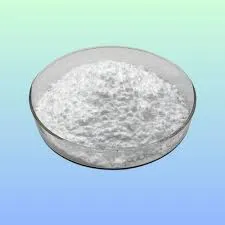
Nov . 07, 2024 22:05 Back to list
Understanding the Benefits and Applications of Redispersible Polymer Powders in Construction
The Importance and Applications of Redispersible Polymer Powder
Redispersible polymer powder (RDP) is an essential component in many construction and building materials. This versatile additive is derived from polymer emulsions and is commonly used to enhance the performance of dry mortar, adhesives, and other construction products. With a variety of applications across different industries, RDP has gained significant traction in recent years, making it a topic of great interest among manufacturers, researchers, and construction professionals.
What is Redispersible Polymer Powder?
Redispersible polymer powder refers to a fine, free-flowing powder that can be easily re-dispersed in water to form a stable polymer emulsion. This characteristic allows RDP to be incorporated into a wide range of dry mixes. Commonly used polymers in RDP production include vinyl acetate, ethylene, and acrylic copolymers. The production process typically involves spray-drying a polymer emulsion, resulting in a powder that retains the properties of the original emulsion.
Enhancements through RDP
One of the primary advantages of RDP is its ability to improve adhesion, flexibility, and water resistance in construction materials. When added to dry mixes, RDP enhances the workability and elasticity of products such as tile adhesives, stucco, and render. The re-dispersed polymer film formed after curing provides increased bonding strength and reduces the risk of cracking and shrinkage.
Moreover, RDP contributes to the durability of construction materials by improving their resistance to environmental factors such as moisture and temperature variations. For instance, in external wall coatings, RDP helps to maintain a flexible and durable surface that withstands harsh weather conditions, reducing the need for frequent repairs.
Applications in the Construction Industry
The applications of redispersible polymer powder are extensive within the construction industry
. Some key areas includeredispersible polymer powder

1. Tile Adhesives RDP enhances the adhesion of tile adhesives, allowing for better performance on various substrates. It improves the initial grab and long-term bonding strength, making it suitable for both wall and floor tile installations.
2. Dry Mortar Mixes In dry mortar applications, including plasters and renders, RDP provides improved workability, adhesion, and water resistance. It allows for easier application and reduces labor costs due to less waste.
3. Repair Mortars For repair mortars, RDP plays a crucial role in ensuring that the repair work adheres effectively to existing surfaces. Its flexibility and crack-bridging capabilities make it ideal for use in structural repairs.
4. Architectural Coatings RDP is frequently used in architectural coatings, where it enhances the performance by providing a smooth finish, improved adhesion, and resistance to weather conditions. This is especially important for external applications that face frequent exposure to the elements.
5. Self-Leveling Compounds In self-leveling compounds, RDP aids in maintaining a fluid consistency while enhancing the final product's mechanical properties. This ensures a level surface with minimal defects.
Environmental Considerations
An emerging area of interest surrounding redispersible polymer powder is its environmental impact. As builders and manufacturers strive for more sustainable practices, RDP alternatives that are eco-friendly and contain low VOC (volatile organic compound) levels are gaining attention. Development of bio-based RDP is also being explored to minimize the carbon footprint associated with conventional RDP production.
Conclusion
In conclusion, redispersible polymer powder represents a pivotal innovation in the construction industry, offering enhanced properties and performance characteristics to a range of building materials. Its ability to improve adhesion, flexibility, and durability makes it a vital additive in various applications, including tile adhesives, dry mortars, and coatings. As the demand for more sustainable building practices grows, the future of RDP looks promising, with ongoing research aiming to develop eco-friendly alternatives that meet the needs of both manufacturers and the environment. Understanding the benefits and applications of RDP is essential for any professional involved in construction, ensuring the delivery of high-quality, durable, and efficient building solutions.
-
tile-bonding-additives-for-stronger-bonds
NewsAug.22,2025
-
construction-grade-rdp-for-wholesale-needs
NewsAug.22,2025
-
trusted-wholesale-hec-partners
NewsAug.22,2025
-
hec-solutions-for-industrial-excellence
NewsAug.22,2025
-
construction-additives-need-hpmc-essentials
NewsAug.22,2025
-
hpmc-versatile-cellulose-ether-for-industries
NewsAug.22,2025







